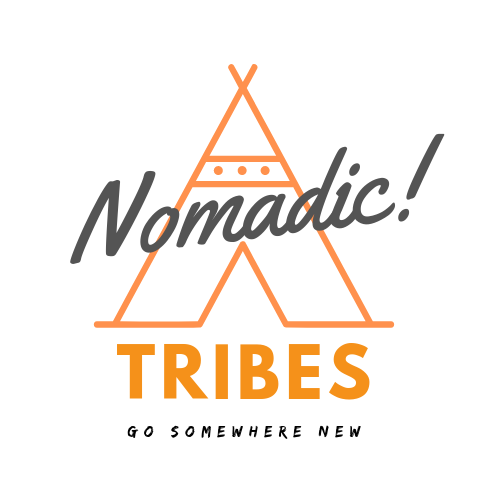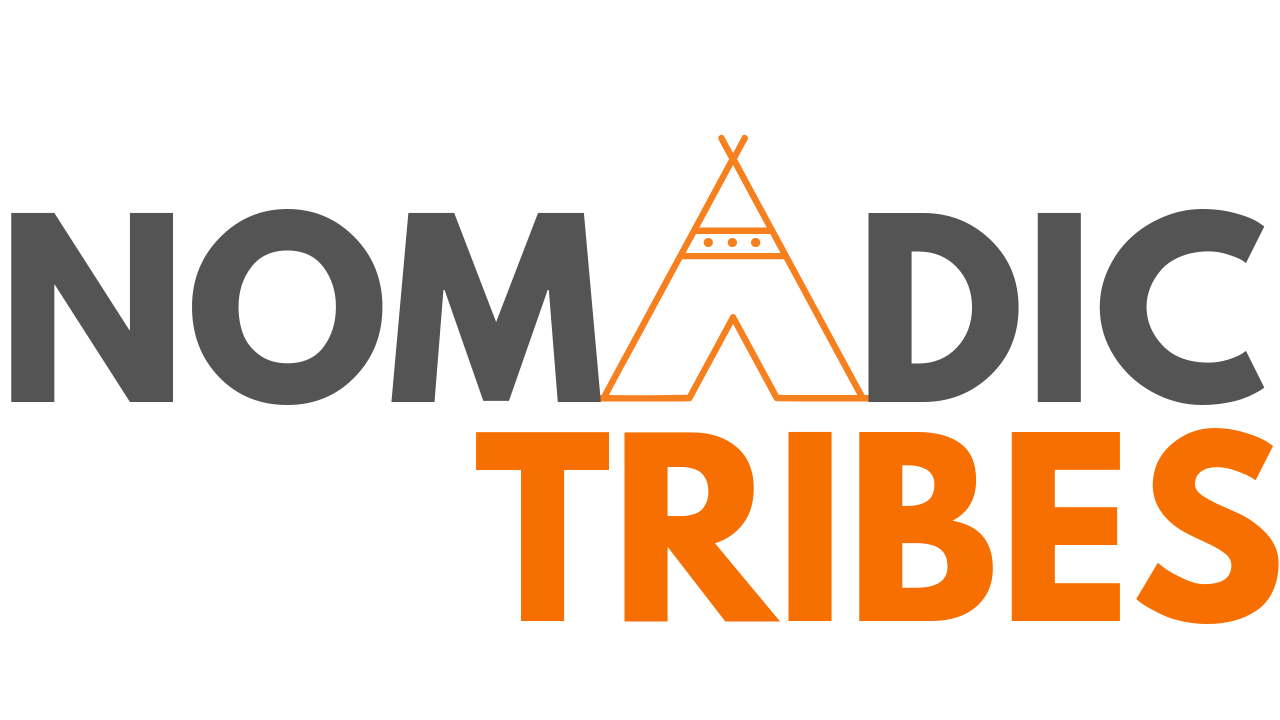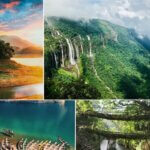Bhutan Awaits: Your Ultimate Travel Guide to the Enchanting Kingdom – Part 1
Bhutan History and Geography
Welcome to Bhutan, the mystical Land of the Thunder Dragon. This enchanting kingdom, with its dramatic landscapes, rich cultural heritage, and vibrant festivals, offers a unique and unforgettable travel experience. From the tall peaks of the Himalayas to the peaceful monasteries in the valleys, Bhutan is a beautiful and calm place. Come with us as we discover the wonders of this amazing country. We’ll share insights and tips to help you enjoy your journey to one of the world’s most fascinating destinations.
A brief history
Bhutan’s history is a mix of ancient traditions, Buddhism, and modern reforms. Early inhabitants lived here thousands of years ago. Buddhism was introduced in the 7th century and strengthened by Guru Rinpoche in the 8th century. In the 17th century, Zhabdrung Ngawang Namgyal unified Bhutan and established a dual system of governance. Despite external threats and British incursions, Bhutan kept its sovereignty and established a monarchy in 1907. Significant modernization and political reforms took place under Kings Jigme Dorji Wangchuck and Jigme Singye Wangchuck. King Jigme Singye Wangchuck introduced the unique philosophy of Gross National Happiness. In 2008, Bhutan transitioned to a constitutional monarchy, blending tradition with democratic governance while preserving its rich cultural heritage.
Bhutan Uniqueness
Bhutan’s geographical features, nestled amidst the eastern Himalayas, offer a stunning backdrop of high-altitude peaks, dense forests, and diverse ecosystems. Its pristine landscapes provide sanctuary to a rich array of flora and fauna, including rare and endemic species. With over half of its land covered in forests and extensive protected areas, Bhutan serves as a bastion of environmental conservation, contributing significantly to global biodiversity efforts. Furthermore, its unique position as a carbon-negative country underscores its commitment to sustainability, with lush forests acting as vital carbon sinks, absorbing more carbon dioxide than the nation emits.
Beyond its natural splendor, Bhutan’s geography plays a pivotal role in preserving its rich cultural heritage. Shielded by its mountainous terrain and nestled between India and China, Bhutan has retained its unique traditions and way of life. This isolation has fostered a strong sense of cultural identity, evident in its traditional architecture, vibrant festivals, and warm hospitality. As a result, Bhutan offers travelers an authentic cultural experience, with opportunities to explore ancient monasteries, participate in local customs, and immerse themselves in the rhythms of daily life. Moreover, its diverse landscape provides an ideal setting for adventure tourism, attracting thrill-seekers eager to trek through rugged mountains, raft down wild rivers, and encounter rare wildlife in its natural habitat.
How to reach
Reaching Bhutan for a tour typically involves a combination of international flights and ground transportation. Here’s a general guide on how to reach Bhutan:
By Air:
- Fly to Paro International Airport: The only international airport in Bhutan is located in Paro, the country’s western region. Several airlines operate flights to Paro from select cities in neighboring countries.
- Connecting Flights: Most travelers fly into Paro via connecting flights from major international hubs such as Delhi, Kolkata, Kathmandu, Bangkok, Singapore, or Dhaka. Popular airlines serving Paro include Druk Air (Bhutan’s national carrier) and Bhutan Airlines.
Visa and Entry Requirements:
- Visa Approval: Before booking your flights, it’s crucial to obtain a visa clearance from the Tourism Council of Bhutan or a licensed Bhutanese tour operator. They will process your visa application and provide a visa clearance letter, which is required to board your flight to Bhutan.
- Tour Booking: Travelers must book their tour package through a licensed Bhutanese tour operator. The tour operator will arrange your visa, accommodation, transportation, and guided tours as per the government’s regulations.
- Minimum Daily Package: Bhutan follows a “Minimum Daily Package” policy, which includes a mandatory daily tariff covering accommodation, meals, transportation, and a licensed guide. This tariff must be paid in advance through the tour operator.
Ground Transportation:
- Airport Transfer: Upon arrival at Paro International Airport, your tour operator will arrange for your transfer to your accommodation in Bhutan.
- Internal Flights: If your tour includes visits to other parts of Bhutan, domestic flights or ground transportation (by car or bus) will be arranged by your tour operator.
- Road Travel: Bhutan’s road network connects major towns and cities, but travel times can be long due to mountainous terrain and winding roads. Comfortable SUVs or buses are typically used for overland travel within the country.
Travel Tips:
- Book in Advance: Due to limited flights and the government’s tourism policy, it’s advisable to book your tour well in advance, especially during peak travel seasons.
- Check Travel Advisories: Before planning your trip, check for any travel advisories or entry requirements, especially amid global health concerns.
By following these steps and working with a licensed Bhutanese tour operator, travelers can ensure a smooth and memorable journey to the captivating kingdom of Bhutan.
Best Time to visit Bhutan
The best time to visit Bhutan depends on your interests and preferences, as each season offers unique experiences. Here’s a breakdown of the different seasons and their advantages:
Spring (March to May):
- Weather: Spring brings pleasant weather with clear skies and mild temperatures, making it ideal for outdoor activities and sightseeing.
- Flora: The valleys come alive with vibrant colors as rhododendrons, magnolias, and other wildflowers bloom, creating a picturesque landscape.
- Festivals: Spring is festival season in Bhutan, with events like Paro Tsechu and Punakha Drubchen showcasing traditional dances, rituals, and cultural performances.
Summer (June to August):
- Monsoon Season: Summer in Bhutan coincides with the monsoon season, bringing occasional rainfall and lush greenery to the landscape.
- Less Crowded: Despite the rain, summer sees fewer tourists, offering the opportunity for quieter exploration and discounted rates on accommodations and tours.
- Festivals: Some festivals, like the Haa Summer Festival, take place during the summer months, providing insights into rural Bhutanese culture and traditions.
Autumn (September to November):
- Clear Skies: Autumn is considered the best time to visit Bhutan, with clear skies, pleasant temperatures, and stunning views of the Himalayas.
- Festivals: The popular Thimphu Tshechu and Wangdue Phodrang Tshechu festivals are held during autumn, drawing visitors from around the world to witness the colorful masked dances and religious ceremonies.
- Trekking: Autumn is also the prime trekking season in Bhutan, with favorable weather conditions and panoramic mountain views along routes like the Druk Path Trek and the Snowman Trek.
Winter (December to February):
- Clear Days: While winter brings cold temperatures, it also offers clear, sunny days, providing excellent visibility for mountain vistas and photography.
- Low Season: Winter is the low tourist season in Bhutan, making it a quieter time to visit popular attractions and enjoy discounted rates on accommodations and tours.
- Birdwatching: Winter is a great time for birdwatching in Bhutan, with migratory birds flocking to the country’s wetlands and forests.
Ultimately, the best time to visit Bhutan depends on your preferences for weather, festivals, outdoor activities, and crowd levels. Whether you choose spring for its blooming flowers, autumn for its clear skies and vibrant festivals, or winter for its peaceful ambiance, Bhutan promises a memorable experience year-round.
Accommodation in Bhutan
Bhutan offers a variety of stay options to suit different preferences and budgets, ranging from luxury resorts to homestays. Here are some popular choices:
Hotels and Resorts:
- Luxury Resorts: Bhutan is home to several luxury resorts offering world-class amenities, spa facilities, and breathtaking views of the Himalayas. Examples include Uma Paro by COMO, Taj Tashi in Thimphu, and Amankora’s lodges scattered across the country.
- Mid-Range Hotels: There are numerous mid-range hotels and guesthouses in Bhutan that offer comfortable accommodation with essential amenities. These hotels cater to both international tourists and domestic travelers, providing a convenient base for exploring the country.
- Budget Guesthouses: Budget guesthouses and lodges are available in popular tourist destinations like Paro, Thimphu, and Punakha. These accommodations offer basic amenities at affordable prices, making them suitable for budget-conscious travelers.
Farmstays and Homestays:
- Farmstays: Experience rural life in Bhutan by staying at a farmstay, where you can participate in farm activities, learn about traditional agriculture, and enjoy authentic Bhutanese cuisine prepared with fresh, locally sourced ingredients.
- Homestays: Stay with a Bhutanese family in their home and immerse yourself in local culture and traditions. Homestays provide a unique opportunity to interact with locals, learn about their way of life, and participate in daily activities.
Campsites and Trekking Lodges:
- Campsites: For adventurous travelers, camping is a popular option in Bhutan, especially during trekking expeditions. Campsites are set up along trekking routes, offering basic facilities such as tents, sleeping bags, and meals prepared by trekking staff.
- Trekking Lodges: Along popular trekking trails like the Druk Path Trek and the Jomolhari Trek, trekking lodges or teahouses provide simple accommodation and meals for trekkers. These lodges offer a cozy refuge after a day of trekking through Bhutan’s stunning landscapes.
Monastery Stays:
- Monastery Guesthouses: Some monasteries in Bhutan offer guesthouse accommodations for travelers seeking a spiritual retreat or a unique cultural experience. Staying at a monastery guesthouse allows visitors to immerse themselves in Buddhist teachings and rituals while enjoying the tranquility of monastery life.
Whether you prefer the comfort of luxury resorts, the authenticity of homestays, or the adventure of camping in the wilderness, Bhutan offers a range of stay options to suit every traveler’s needs and interests.
Food options in Bhutan
Bhutanese cuisine is characterized by its unique flavors, influenced by local ingredients, traditional cooking methods, and Buddhist culinary practices. Here’s an overview of the food in Bhutan, including vegetarian and non-vegetarian options, as well as some popular local delicacies:
Vegetarian Food:
- Ema Datshi: One of Bhutan’s most iconic dishes, ema datshi is a spicy stew made with chili peppers (ema) and cheese (datshi). It’s often served with rice and is a staple in Bhutanese cuisine.
- Kewa Datshi: Similar to ema datshi, kewa datshi is a potato (kewa) and cheese stew, offering a milder alternative for those who prefer less heat.
- Shamu Datshi: Another variation of datshi, shamu datshi features mushrooms (shamu) cooked in a cheese sauce, offering a savory and earthy flavor profile.
Non-Vegetarian Food:
- Phaksha Paa: Phaksha paa is a popular non-vegetarian dish made with pork (phaksha) cooked with spicy red chilies, onions, and sometimes tomatoes. It’s typically served with rice and offers a hearty and flavorful meal.
- Jasha Maroo: Jasha maroo is a Bhutanese chicken dish marinated with garlic, ginger, onions, and chili peppers, then simmered until tender. It’s often served with rice or traditional Bhutanese flatbread known as “ezay.”
- Sikam Paa: Sikam paa is a dish made with dried pork (sikam) cooked with chili peppers, onions, and other spices. The drying process gives the pork a unique flavor and texture, making it a popular choice in Bhutanese cuisine.
Local Delicacies:
- Suja: Suja is a traditional Bhutanese butter tea made with salt, butter, and tea leaves, giving it a rich and savory flavor. It’s a staple beverage enjoyed throughout Bhutan, especially during festivals and social gatherings.
- Jasha Tshoem: Jasha tshoem is a hearty stew made with beef, vegetables, and sometimes mushrooms, flavored with garlic, ginger, and Bhutanese spices. It’s a comforting dish that’s perfect for chilly mountain evenings.
- Momos: While momos are found across the Himalayan region, Bhutanese momos often have a unique twist, with fillings such as cheese, potatoes, or mixed vegetables. They’re typically served with a spicy dipping sauce and are a popular snack or meal option.
Bhutanese cuisine reflects the country’s cultural heritage and reliance on local ingredients, offering a diverse array of flavors and dishes for both vegetarians and non-vegetarians alike. Whether you’re indulging in the fiery heat of ema datshi or savoring the comforting warmth of phaksha paa, Bhutanese food promises a culinary adventure for every palate.
How to Travel in Bhutan for sightseeing
Traveling in Bhutan for sightseeing is an enriching experience, offering a blend of natural beauty, cultural heritage, and spiritual significance. Here’s a guide on how to explore Bhutan’s top sightseeing destinations:
1. Plan Your Itinerary:
- Consult with a Tour Operator: Bhutan has a “High Value, Low Impact” tourism policy, which requires travelers to book their trip through a licensed Bhutanese tour operator. Work with your tour operator to create a customized itinerary that includes your preferred sightseeing destinations and activities.
2. Explore Cultural Landmarks:
- Visit Dzongs: Dzongs are fortified monastic fortresses that serve as administrative centers and religious institutions. Explore iconic dzongs such as Punakha Dzong, Paro Dzong (Rinpung Dzong), and Trongsa Dzong to admire their stunning architecture and learn about Bhutanese history and culture.
- Discover Temples and Monasteries: Bhutan is dotted with numerous temples (lhakhangs) and monasteries (gomphas), each with its own significance and beauty. Visit sacred sites like Taktsang Monastery (Tiger’s Nest), Kyichu Lhakhang, and Chimi Lhakhang to experience the spiritual essence of Bhutan.
3. Experience Natural Wonders:
- Trekking: Embark on a trekking adventure to explore Bhutan’s pristine landscapes and breathtaking vistas. Popular trekking routes include the Druk Path Trek, Snowman Trek, and Jomolhari Trek, each offering unique challenges and rewards.
- Scenic Drives: Enjoy scenic drives through Bhutan’s picturesque valleys and mountain passes, stopping at viewpoints along the way to capture stunning photographs of the Himalayan scenery.
4. Attend Festivals:
- Immerse in Cultural Festivals: Plan your visit to coincide with one of Bhutan’s vibrant festivals (tsechus) to witness colorful masked dances, religious rituals, and traditional ceremonies. Popular festivals include Paro Tsechu, Thimphu Tsechu, and Wangdue Phodrang Tsechu.
5. Experience Local Life:
- Stay in Homestays: Experience authentic Bhutanese hospitality by staying in homestays in rural villages. Engage with local families, participate in daily activities, and gain insights into traditional Bhutanese lifestyle and customs.
- Explore Local Markets: Wander through bustling markets in towns like Thimphu and Paro to shop for handicrafts, textiles, and souvenirs. Don’t miss the opportunity to sample local delicacies and street food.
6. Follow Responsible Tourism Practices:
- Respect Cultural Norms: Familiarize yourself with Bhutanese customs and etiquette, such as removing your shoes before entering religious sites and dressing modestly.
- Practice Leave No Trace: Help preserve Bhutan’s pristine environment by practicing responsible tourism, including proper waste disposal and minimizing your environmental impact.
By following these tips and immersing yourself in Bhutan’s rich cultural and natural heritage, you’ll create unforgettable memories and gain a deeper appreciation for this enchanting kingdom.
In the next part of our Bhutan Blog, we’ll cover places to visit in Bhutan, other activities such as wildlife, motorcycle tour, cycling tour, cultural festivals & other essentials for a hassle free tour. Click here
Image source : Unsplash





 Message Us
Message Us